
The current VR devices can be divided into three main categories based on hardware form: host VR headsets, mobile VR glasses, and all-in-one VR machines. Host VR headsets can provide a truly immersive VR experience, but high performance means high prices. Not only are the headsets and controllers expensive, but you also need to spend a high price to buy a high-performance computer or game console, making the total cost easily exceed ten thousand yuan. Mobile VR glasses are entry-level products for experiencing VR. The advantage of these devices is their low price and ease of use, as you can simply insert a phone to watch, but they offer poor comfort and viewing effects, often causing dizziness, making them unsuitable for playing VR games. All-in-one VR machines are priced between 2000-4000 yuan, belonging to the mid-range products. They have independent CPUs and input/output display functions, unlike host VR that requires a computer and transmission lines, and major manufacturers have already launched such devices.
With so many devices available, it is inevitable that friends looking to buy VR devices feel dazzled. Today, we have sorted out most of the mainstream VR devices currently available, hoping you can gain a systematic understanding of VR devices after reading this.
Host VR Headsets
· HTC VIVE
——It is one of the most satisfying VR devices currently available. Excellent resolution, positional tracking, and content platforms are its highlights. Many offline VR stores use this device. The Vive headset is co-developed by HTC and Valve, becoming the first choice for players on the Steam platform.
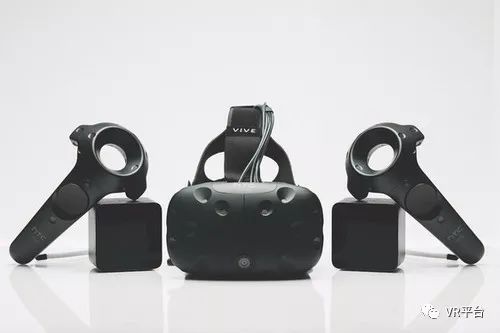
Manufacturer: HTC
Release Date: February 2016
Price: 4888 RMB
Screen: Dual AMOLED screens
Resolution: Single-eye resolution of 1080 x 1200 pixels (combined resolution of 2160 x 1200 pixels)
Refresh Rate: 90 Hz
Field of View: 110 degrees
Positional Tracking System: Lighthouse tracking technology
Content Platform: Viveport, SteamVR
Others: Supports TPCast wireless tracking module, aGlassDKII eye-tracking module
Recommended Computer Configuration:
GPU: NVIDIA GeForce GTX 970, AMD Radeon R9 290 or higher
CPU: Intel core i5-4590/AMD FX 8350 or higher
RAM: 4 GB or more
Video Output: HDMI 1.4, DisplayPort 1.2 or higher
USB Ports: 1 USB 2.0 or higher port
Operating System: Windows 7 SP1, Windows 8.1 or higher, Windows 10
· HTC Vive Pro
——The physical design difference between HTC Vive and Vive Pro is minimal, but the differences between the two are quite significant. One of the most notable improvements of the HTC Vive Pro compared to the previous generation is the display. In addition to backward compatibility with HTC Vive’s trackers and controllers, it supports second-generation Lighthouse trackers and controllers. It is impressive, but it feels a bit overkill for home use.
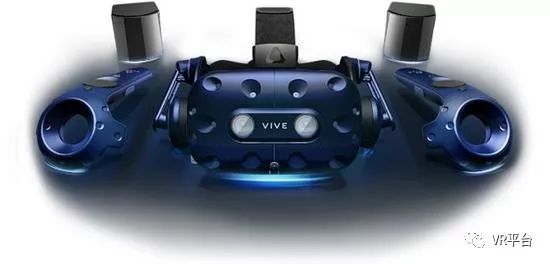
Manufacturer: HTC
Release Date: April 24, 2018
Price: 11888 RMB
Screen: Dual AMOLED screens
Resolution: Single-eye resolution of 1440 x 1600, dual-eye resolution of 3K (2880 x 1600)
Refresh Rate: 90Hz
Field of View: 110 degrees
Positional Tracking System: SteamVR 2.0 tracking technology
Content Platform: Viveport, SteamVR
Others: Supports Intel WiGig wireless technology
Recommended Computer Configuration:
GPU: NVIDIA GeForce GTX 970, AMD Radeon R9 290 or higher
CPU: Intel core i5-4590/AMD FX 8350 or higher
RAM: 4 GB or more
Video Output: DisplayPort 1.2 or higher
USB Ports: 1 USB 3.0 or higher port
Operating System: Windows 8.1 or higher, Windows 10
· Oculus Rift
——Oculus is a well-known brand. Oculus Rift is the strongest competitor to HTC Vive, both standing at the top of the VR headset ecosystem. It is important to note that you need to spend more money to purchase cameras to upgrade the Rift to room-scale VR.
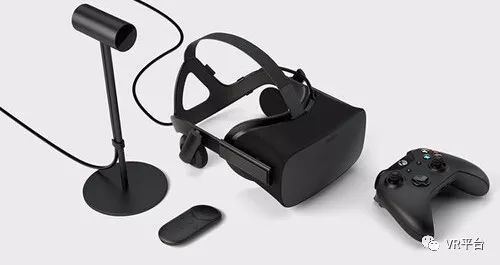
Manufacturer: Oculus VR
Release Date: March 2016
Price: 399 USD (includes a pair of Touch controllers)
Screen: Dual OLED screens
Resolution: Single-eye resolution of 1080 x 1200 pixels (combined resolution of 2160 x 1200 pixels)
Refresh Rate: 90Hz
Field of View: 110 degrees
Positional Tracking System: Active infrared optical + nine-axis positioning system
Content Platform: Oculus Home, SteamVR
Others: Supports TPCast wireless tracking module
Recommended Computer Configuration:
GPU: NVIDIA GeForce GTX 970, AMD Radeon R9 290 or higher
CPU: Intel i5-4590 or higher
RAM: 8GB or more
USB Ports: 1 HDMI 1.3, 3 USB 3.0, 1 USB 2.0
Operating System: Windows 7 SP1 or higher
· PlayStation VR
——Sony’s PSVR headset is different from other VR devices with positional tracking; it does not require a high-end gaming PC to support computing. Instead, it works with the PlayStation 4 or 4 Pro, both of which can drive the PSVR, providing a high-quality VR experience. PSVR is one of the most comfortable headsets, although it is heavy, it fits snugly against the user’s head.
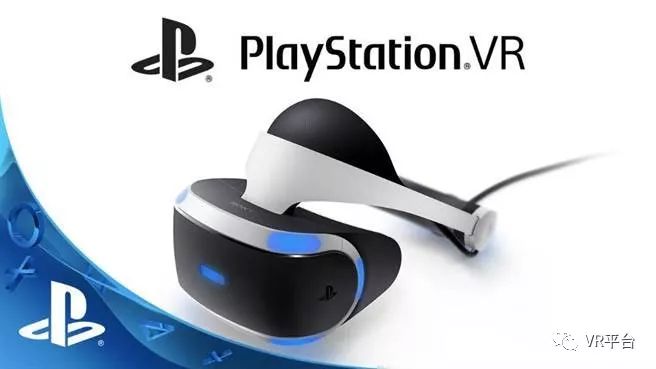
Manufacturer: Sony
Release Date: October 2017
Price: 2480 HKD (includes PlayStation Camera)
Screen: Dual OLED screens
Resolution: Single-eye resolution of 960 x 1080 pixels (combined resolution of 1920 x 1080 pixels)
Refresh Rate: 120Hz
Field of View: 100 degrees
Positional Tracking System: PlayStation Camera tracking
Content Platform: PlayStation Store
Others: Integrated two cables into one that connects to the processing unit (the “black box”); the processing unit will support HDR video input
Recommended Console: PlayStation 4, PlayStation 4 Pro
· Dapeng E3
——The headset is lightweight, comfortable to wear, and equipped with a remote control and laser base station, giving it a strong technological feel. In terms of gaming, it is compatible with almost all SteamVR games, and it performs excellently in some VR games that require controllers and positional tracking systems, providing a strong sense of immersion.
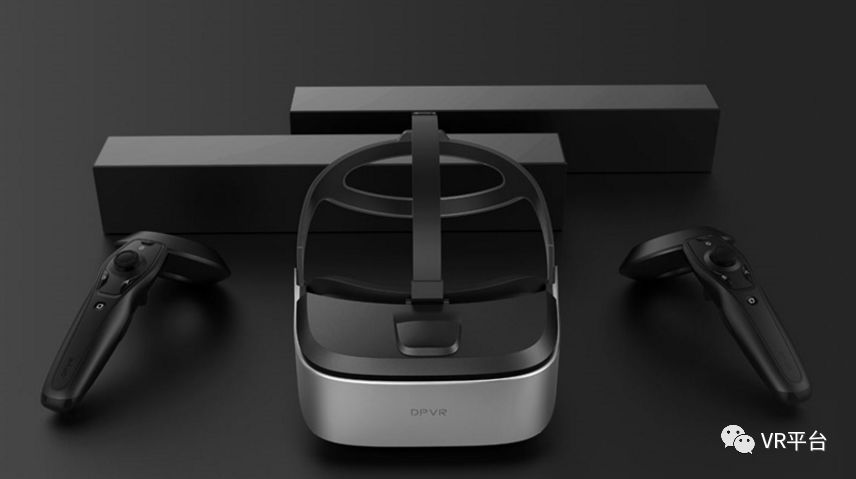
Manufacturer: Dapeng VR
Release Date: May 2017
Price: Single base station version 3599 RMB, dual base station version 3899 RMB
Screen: Dual AMOLED screens
Resolution: Combined resolution of 2560 x 1440 pixels
Refresh Rate: Not disclosed
Field of View: 110 degrees
Positional Tracking System: Polaris laser tracking
Content Platform: VROnline, SteamVR
Others: Dapeng E3 weighs only 297 grams and adopts an integrated design with a simplified receiver layout
Recommended Computer Configuration:
GPU: NVIDIA GeForce GTX 970, AMD Radeon R9 290 or higher
CPU: Intel core i5-4590/AMD FX 8350 or higher
RAM: 4 GB or more
Operating System: Windows 7 SP1, Windows 8.1 or higher, Windows 10
· Hypereal Pano
——The headset has a large internal space, making it easy for users who wear glasses to use the Hypereal Pano headset. In actual use, compatibility is generally good, but occasional tracking loss significantly affects the gaming experience, requiring enhanced support for SteamVR.
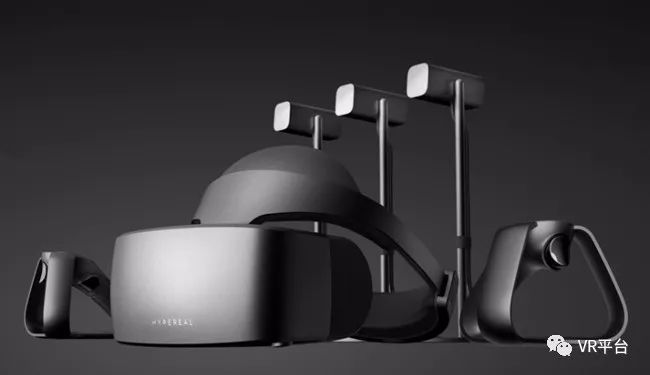
Manufacturer: HYPEREAL
Release Date: June 2017
Price: 2499 RMB
Screen: Dual AMOLED screens
Resolution: Combined resolution of 2160 x 1200 pixels
Refresh Rate: 90Hz
Field of View: 110 degrees
Positional Tracking System: 0.1 mm precision infrared tracking
Content Platform: Some SteamVR, Hypereal platform
Others: Hypereal Sens can be purchased instead of the wireless controller, priced at 799 RMB
Recommended Computer Configuration:
GPU: NVIDIA GeForce GTX 960/AMD Radeon RX 460 or higher
CPU: Intel i3-6100/AMD FX 4350 or higher
RAM: 8GB or more
USB Ports: 2×USB 3.0 and 1×USB 2.0
Operating System: Windows 7 SP1 and above
· AntVR Headset 2S
——The AntVR 2S set is divided into hand tracking version and walking tracking version, with slight differences between the two. The latter adds a VR tracking carpet (+ buckle), allowing for free movement within space, recognizing actions like walking, jumping, and crouching.

Manufacturer: AntVR
Release Date: August 2017
Price: 4399 RMB
Screen: Independent dual OLED screens
Resolution: Combined resolution of 2160 x 1200 pixels
Refresh Rate: 90HZ
Field of View: 110 degrees near circular field of view
Positional Tracking System: Inside-out infrared tracking technology
Content Platform: SteamVR, ANTVR Home
Others: The set includes 2.4G wireless controllers with 4 hours of battery life
Recommended Computer Configuration:
GPU: NVIDIA GeForce GTX 970 or higher
CPU: Intel core i5-4590/AMD FX 8350 or higher
Memory: 8GB or more
Operating System: 64-bit Windows 10 SP1 or newer
· AntVR Headset 2C
——The unique feature of AntVR Headset 2C is that it uses a proprietary Xbox architecture controller to simulate VR operations, allowing users to play more Steam platform VR games comfortably from their sofa through the AntVR lobby. The AntVR Headset 2C uses adaptive pupil distance technology, allowing users to automatically adjust the lens distance based on their eye distance when wearing the headset.
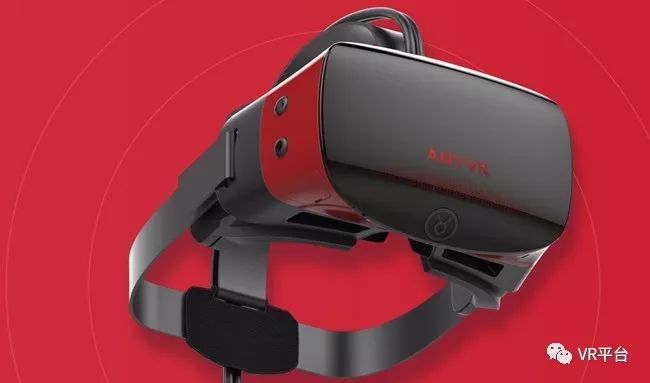
Manufacturer: AntVR
Release Date: August 2017
Price: 2199 RMB
Screen: Independent dual OLED screens
Resolution: Combined resolution of 2160 x 1200 pixels
Refresh Rate: 90HZ
Field of View: 110 degrees near circular view
Positional Tracking System: None
Content Platform: SteamVR, ANTVR Home
Others: Proprietary Xbox architecture controller simulating VR operations
Recommended Computer Configuration:
GPU: NVIDIA GeForce GTX 970 or higher
CPU: Intel core i5-4590/AMD FX 8350 or higher
Memory: 8GB or more
Operating System: 64-bit Windows 10 SP1 or newer
· 小派4K VR
——Weight and resolution are indeed the advantages of 小派4K, but it also has two prominent problems: first, the low refresh rate can easily cause dizziness; second, the lack of controllers and a complete spatial tracking system limits its experience ceiling. However, the second problem can be solved by purchasing the NOLO kit.
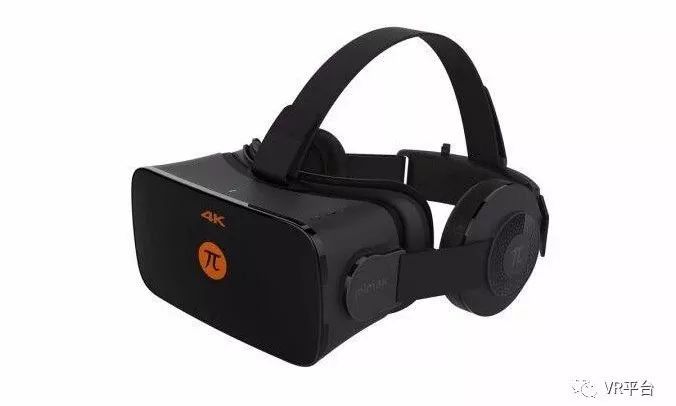
Manufacturer: 小派VR
Release Date: April 2016
Price: 1999 RMB
Screen: LCD
Resolution: 3840×2160
Field of View: 110 degrees
Positional Tracking System: None
Content Platform: Piplay
Recommended Computer Configuration:
GPU: NVIDIA GTX960/AMDR9290 or higher
CPU: Intel i5 or better
Memory: 4GB or larger
Operating System: Windows 7, 8, 10
· 小派8K VR
——Currently, the 小派8K series products have begun shipping to global crowdfunding users, and for pre-sale orders, shipping is expected to occur sequentially after the completion of crowdfunding. We look forward to the performance of the highest resolution VR headset currently available.
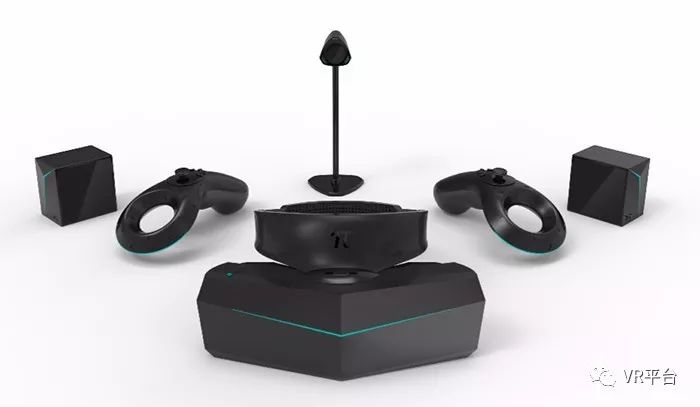
Manufacturer: 小派VR
Release Date: October 2018
Price: Starting from 5399 RMB
Screen: CLPL screen
Resolution: 7680*2160
Field of View: 200 degrees
Positional Tracking System: Self-developed Pitracking laser positioning, compatible with Lighthouse 1.0 and 2.0 laser positioning, supports Steam VR 1.0 and 2.0 tracking versions
Content Platform: Piplay, Steam, Oculus platform
Weight: 470g
All-in-One VR Machines
· Pico G2小怪兽2
——Designed for young people, the affordable pricing and ultra-lightweight make this device exceptionally attractive. It focuses on the viewing experience. iQIYI VR, Youku VR, and its own video library ensure rich content.
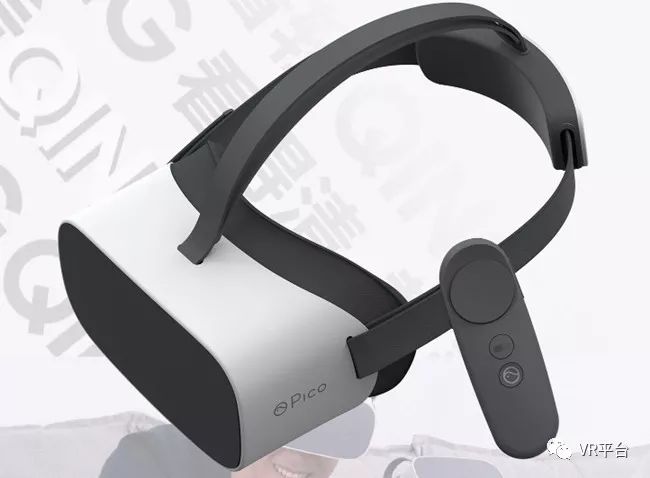
Manufacturer: Pico/小鸟看看
Release Date: July 2018
Price: 1999 RMB
Screen: LCD display
Resolution: Combined resolution of 2880 x 1600 pixels
Refresh Rate: 90 Hz
Field of View: 101 degrees
Content Platform: Pico UI 3.0 + Viveport dual content platform
Processor: Qualcomm Snapdragon 835
Weight: 268g
Controller: One 3DOF motion controller
· Pico Neo
——This all-in-one VR machine is positioned for high-end consumers and industry applications, with 6DoF headsets allowing users to move freely. Some media have reported that Pico Neo is more stable than Focus, with no crashes or automatic restarts.
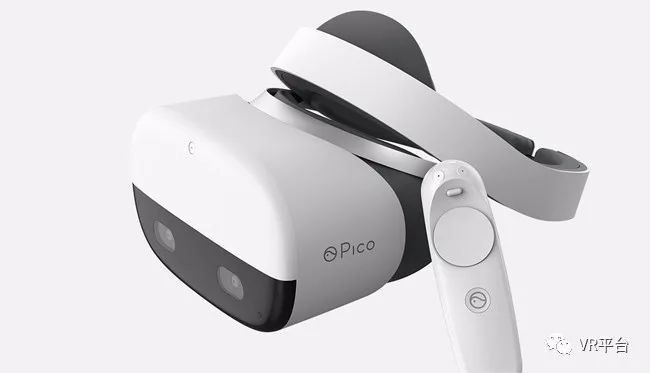
Manufacturer: Pico/小鸟看看
Release Date: December 2017
Price: 3999 RMB
Screen: LCD display
Resolution: Combined resolution of 2880 x 1600 pixels
Refresh Rate: 90 Hz
Field of View: 101 degrees
Tracking System: Inside-out cameras, head 150-degree FOV tracking
Content Platform: Pico UI 3.0 + Viveport dual content platform
Processor: Qualcomm Snapdragon 835
Weight: 380g
Controller: One 3DOF motion controller
· Vive Focus
——Vive Focus is HTC’s first all-in-one VR product aimed at the consumer market. It retains HTC’s advantages in positioning and can handle relatively intense dodging actions better than expected. However, improvements are still needed in control smoothness and compatibility.
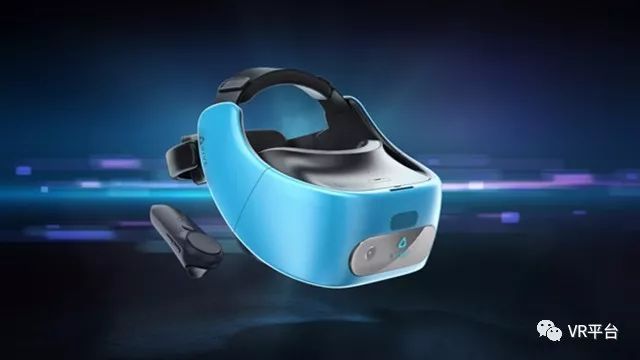
Manufacturer: HTC
Release Date: November 2017
Price: Electric Eye Blue 4299 RMB; Charming White 3999 RMB
Screen: Dual AMOLED screens
Resolution: Combined resolution of 2880 x 1660 pixels
Refresh Rate: 75 Hz
Field of View: 110 degrees
Tracking: Inside-out headset tracking solution
Content Platform: Viveport, Vive Wave VR open platform
Processor: Qualcomm Snapdragon 835
Weight: Approximately 500g
Controller: Wireless controller, supports 3D motion tracking
· Oculus Go
——A budget-friendly device from a major manufacturer, with detailed screen display and excellent performance. However, the battery life is about 1.5 to 2 hours of gaming time, which is average, and the 3DoF tracking somewhat diminishes the immersive experience.
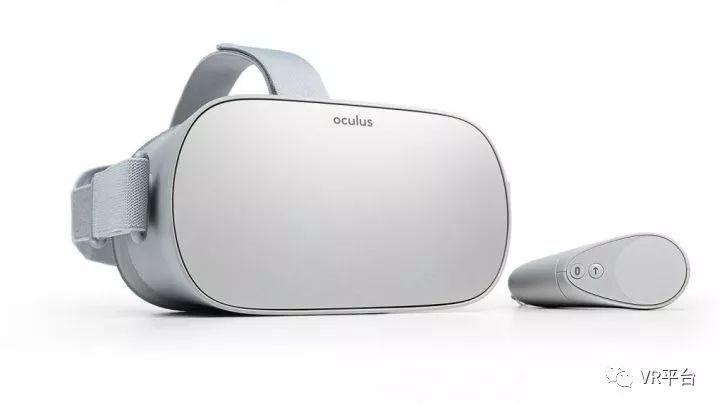
Manufacturer: Oculus VR
Release Date: May 2018
Price: 199 USD (32GB)
Screen: Fast-switch WQHD LCD display
Resolution: Combined resolution of 2560 x 1440 pixels
Refresh Rate: 72 Hz
Field of View: 90 degrees
Tracking: 3 degrees of freedom rotational tracking
Content Platform: Oculus Home
Processor: Qualcomm Snapdragon 821
Weight: 468g
Controller: One 3 degrees of freedom rotational tracking controller
Others: Fully compatible with Samsung Gear VR, software can also be shared
· 大朋M2 Pro
——The first all-in-one machine with a tracking system in China. Solid workmanship, comfortable to wear, and rich content platform resources. However, it has been nearly two years since its release, and it is inevitably surpassed by newly launched devices..
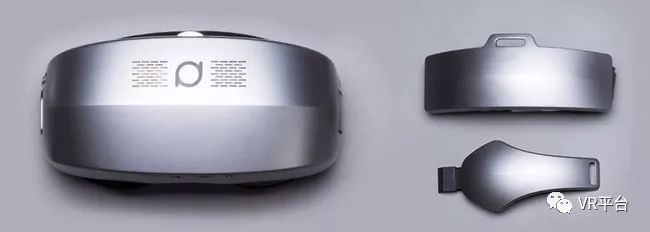
Manufacturer: Dapeng VR
Release Date: December 2016
Price: 3299 RMB
Screen: Dual AMOLED screens
Resolution: Combined resolution of 2560 x 1440 pixels
Refresh Rate: Not disclosed
Field of View: 96 degrees
Tracking: Compatible with M-Polaris. M-Polaris is the mobile VR interaction positioning system launched by Dapeng VR
Content Platform: 3D Bobo, iQIYI, Sohu VR, Little Flower Show Live, etc.
Processor: Samsung Exynos 7420 processor
Operating System: Deeply customized VR OS based on VR system
Weight: 398g
Controller: Bluetooth controller
·暴风Matrix
——Matrix’s three main selling points are price, weight, and clarity. However, in actual use, the performance of Matrix is somewhat unsatisfactory, with blurriness occurring when moving images, which easily leads to dizziness.
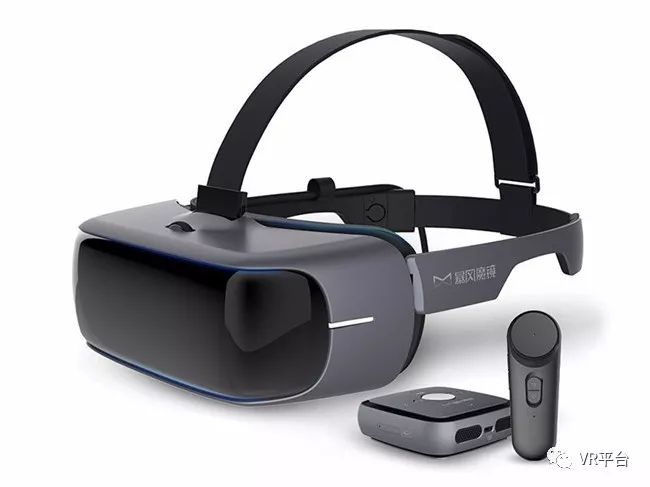
Manufacturer: Baofeng Magic Mirror
Release Date: May 2017
Price: 2499 RMB
Screen: A 3K resolution LCD screen
Resolution: Combined resolution of 2880 x 1440 pixels
Refresh Rate: 90HZ
Field of View: 110 degrees
Content Platform: Magic UI 2.0 integrates multiple content platforms such as Xinhua News, iQIYI, Youku, etc.
Processor: Qualcomm Snapdragon 820
Weight: 230g
Controller: A 3DoF controller
· 奇遇4K VR2
——Customized 4K resolution, 13M bitrate, and 60 fps films can be said to elevate the VR viewing experience to a new height. Whether in VR viewing or VR gaming, this device offers a good experience, but the price is indeed quite high.
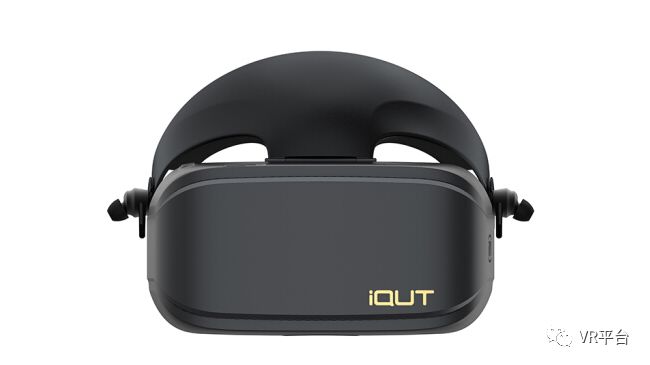
Manufacturer: iQIYI
Release Date: May 2018
Price: 3899 RMB
Screen: 4K LCD screen
Resolution: 3840 x 2160 pixels
Refresh Rate: Not disclosed
Field of View: 110 degrees
Tracking: 9-axis motion sensor
Content Platform: IQUT Future Cinema
Processor: Qualcomm Snapdragon 835
Weight: Main unit 280g
· 小宅X1一体机
——小宅X2 is an all-in-one machine launched by 小宅 focusing on film and television, primarily for VR viewing. Its price is among the lowest for VR all-in-one devices, so its resolution cannot be compared with those costing several thousand yuan.
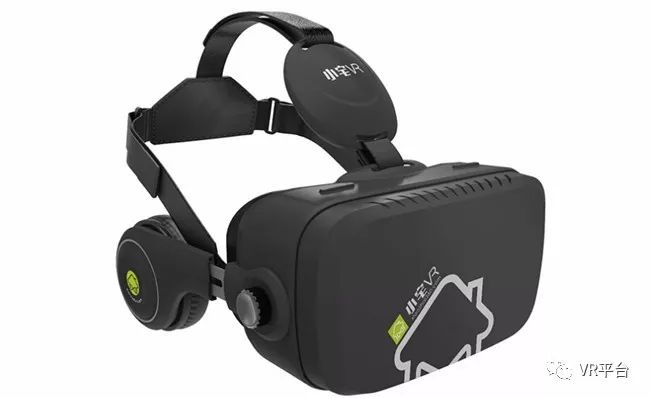
Manufacturer: 小宅VR
Release Date: 2016
Price: 899 RMB
Screen: Sharp 5.5-inch screen
Resolution: 1920 x 1080
Field of View: 120 degrees
Tracking: Built-in 9-axis tracking
Content Platform: Integrates Orange VR, Baidu VR browser, QQ browser VR, Little Flower Show VR live, etc.
Processor: Octa-core ARM Cortex A7 architecture
Weight: 580g
· 小宅X2一体机
——小宅X2 is a gaming version all-in-one machine launched by 小宅, capable of running VR games based on viewing, but with a low 30 fps, which is below the mainstream level and requires high resource quality.
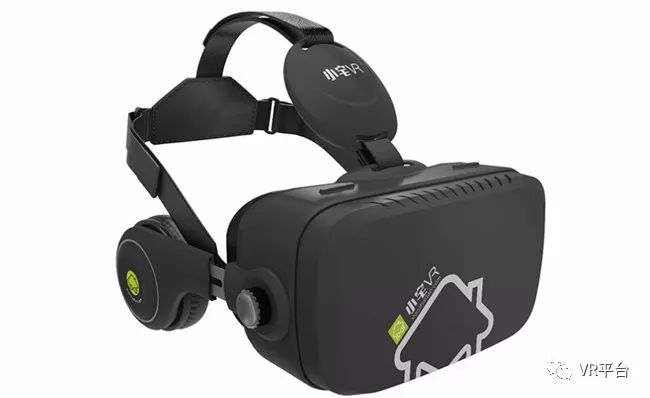
Manufacturer: 小宅VR
Release Date: 2016
Price: Not disclosed
Screen: Sharp 5.5-inch screen
Resolution: 2560 x 1440
Field of View: 120 degrees
Tracking: Built-in 9-axis tracking
Content Platform: Integrates Orange VR, Baidu VR browser, VR experience games, QQ browser VR, Little Flower Show VR live, etc.
Processor: Hexa Core processor with 2xARM Cortex A72 @ 2.0 GHz, 4x ARM Cortex A53
Weight: 580g
· Xiaomi VR All-in-One
——Inheriting Xiaomi’s attractive product design style, the appearance of this device is a plus. However, the comfort of wearing and the feeling of dizziness are also notable drawbacks. With a starting price of 1499 RMB, it is a low entry point for those very interested in VR, especially for those who enjoy playing games and watching panoramic videos.
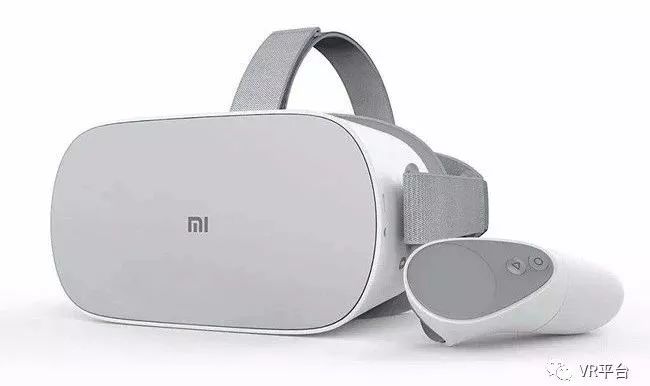
Manufacturer: Xiaomi
Release Date: May 2018
Price: Starting from 1499 RMB
Screen: Fast-Switch display
Resolution: 2560 * 1440
Refresh Rate: 60-72HZ
Field of View: 103 degrees
Tracking: 3DOF head tracking
Content Platform: Compatible with Xiaomi VR content and Oculus platform
Processor: Qualcomm Snapdragon 821 processor
Weight: 425g
· HiMirror
HiMirror has launched three VR all-in-one machines focused on VR viewing, namely HiMirror 1st Gen, Big Picture, and HiMirror 2nd Gen.

The first generation HiMirror is priced at 2999 RMB. It uses dual 0.7-inch OLED micro-displays, offering the most realistic vibrant colors, single-eye resolution of 1920 x 1080, with a clarity of 3147 PPI.
The Big Picture is priced at 2399 RMB, and is the world’s first VR device using SHARP 4K ultra-clear retina screen, customized for long-term binge-watching, with an optical system that HiMirror calls a head-mounted TV.
The second generation HiMirror is priced at 3999 RMB. It adopts military-grade micro-display technology from Sony, achieving microscopic-level display with a PPI as high as 3147, ten times that of mobile phone screens. The full-frame clarity is distortion-free, effectively eliminating dizziness for longer viewing comfort.
Mobile VR Glasses
· Samsung
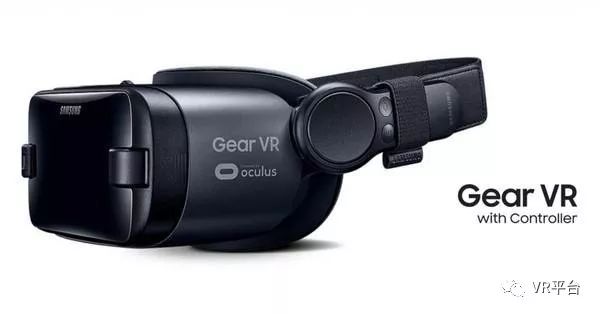
If you want a good VR experience without spending a lot of money on equipment, Samsung Gear VR offers an excellent option for Samsung smartphone users. This low-cost VR glasses are developed in collaboration with Oculus, and although they cannot achieve the positional tracking features of the Rift, they still provide an immersive VR experience.
Gear VR is lightweight and has no pressure points. Its face mask is made of breathable material to prevent lens fogging. The 2016 version of Gear VR improved the touchpad on the right side of the device, providing a smooth operating feel, making it very suitable for browsing menus. In addition to the back and volume buttons, this version now also has a very practical Home button.
Currently, Gear VR supports Samsung Galaxy Note7, Galaxy S7, Galaxy S7 edge, Galaxy Note5, Galaxy S6 edge +, Galaxy S6, and Galaxy S6 edge. These phones have excellent visual performance. However, it must be acknowledged that this VR glasses are significantly limited because they only adapt to these phones.
Price: 699 RMB.
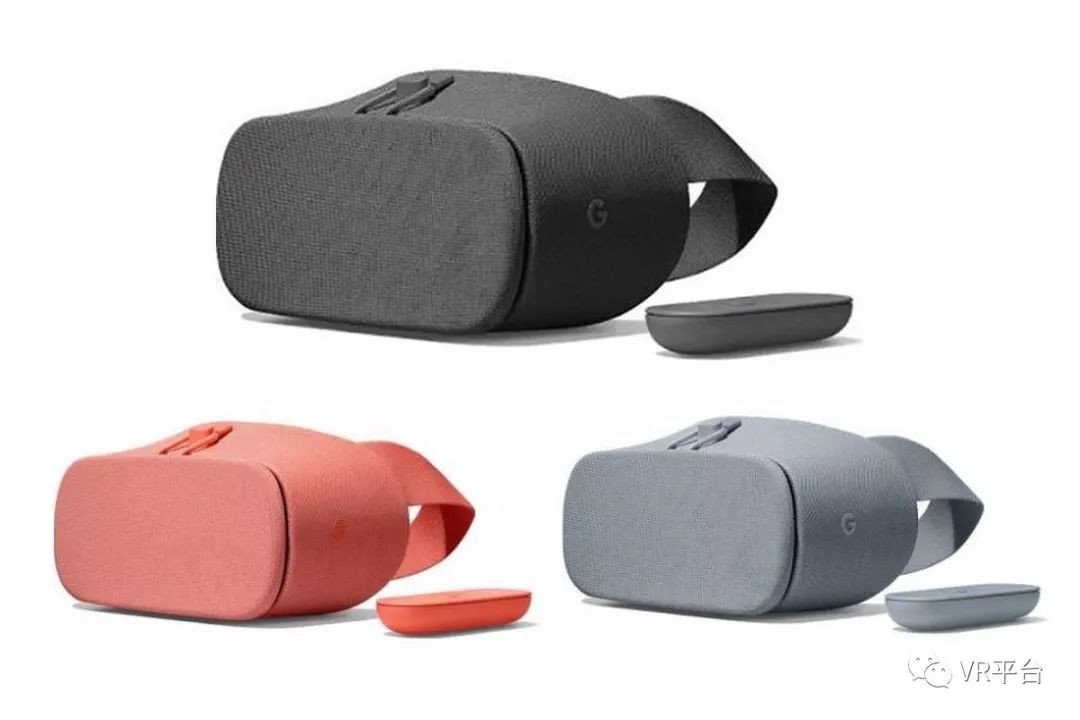
After launching into the market through Cardboard, Google has confirmed the feasibility of mobile VR. The end result is Daydream, which is a high-end version of Cardboard VR, redesigned to provide comfort for long gaming sessions with lightweight fabric. Its main focus is on gaming, but it can also be used for other fun experiences.
Google has not officially announced the standards for Daydream-ready phones, only showcasing compatibility with three phones: Google Pixel, ZTE Axon 7, and ASUS Zenfone 3 Deluxe.
Even if some current phones may not meet Google’s requirements for low-latency display, they can still achieve most expected VR functions. Therefore, do not worry about not having a Daydream-ready phone; your current Android smartphone is likely compatible with Daydream.
Price: Latest model 100 USD.
· Xiaomi

Xiaomi has launched three models of mobile VR glasses, including the 49 RMB Xiaomi VR glasses toy version, the 99 RMB Xiaomi PLAY2, and the 199 RMB Xiaomi VR glasses. The VR glasses toy version is just a simple mobile VR glasses box, supporting phone sizes from 4.7 to 5.7 inches, plug and play, but can only be used for simple VR experiences. The Xiaomi PLAY2 has no size restrictions for compatible phones, recommended for phones with screens of 4.7 to 5.7 inches, preferably with a resolution of 1080P or higher, a 93-degree field of view, an open design phone chamber, and ergonomic design with a large arc surface, with 268 invisible heat dissipation holes throughout the body, high-elasticity headband, and coated lenses, making it much more advanced than the toy version, but its main use is still for viewing only. The compatible phones for Xiaomi VR glasses are limited to Xiaomi 5/Xiaomi 5s/Xiaomi 5s Plus/Xiaomi Note 2. The refresh rate is 1600 Hz, with a field of view of 103 degrees, built-in gyroscope, and gravity sensor, making it a qualified VR device, and it also comes with a 9-axis motion controller, supporting touch operation. One of the highlights of the Xiaomi VR glasses is that it can achieve a super-low latency of 16 milliseconds, mainly due to system optimization, independent motion sensors, and phone performance.
· Baofeng Technology

Baofeng Magic Mirror is Baofeng Technology’s VR series hardware device. Currently, three models of mobile VR glasses are on sale, including the 199 RMB Baofeng Magic Mirror S1 Light Version, the 149 RMB Daydream VR glasses, and the 99 RMB Little Q Head Control Version. The Baofeng Magic Mirror S1 is made of high-quality materials, lightweight and beautiful, looking transparent and textured. It supports Apple and Android smartphones from 4.7 to 5.5 inches. It uses Fresnel lenses, with a 110-degree field of view ensuring an immersive visual experience for games and films. The Daydream VR glasses are compatible with Apple and Android, supporting all mainstream smartphones, with an 88-degree field of view, weighing 210g. The motion controller needs to be purchased separately or as part of a set. The Little Q Head Control Version can be considered a smart portable “little gadget” with a cute appearance, featuring two little ears. Its field of view is 75 degrees, and it has adjustable near-sightedness buttons for both eyes, with 0-600 degrees near-sightedness adjustment and 56-70mm adaptive pupil distance adjustment.
· LG
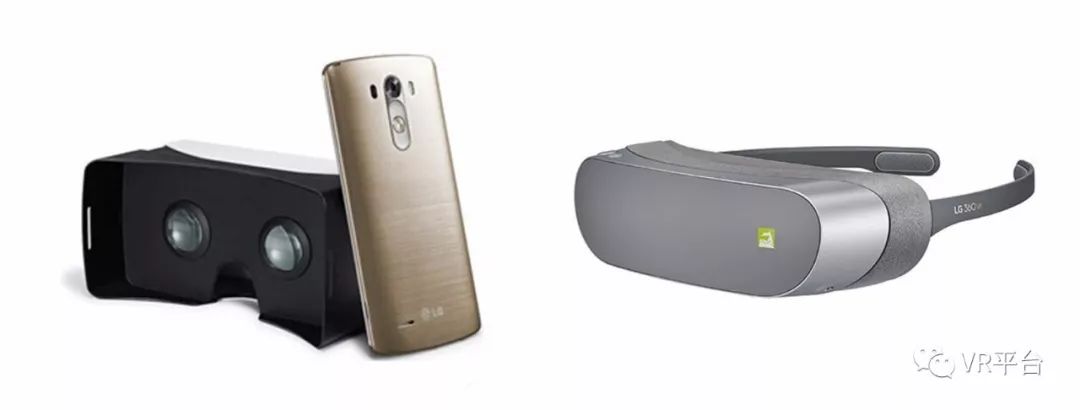
LG has launched two mobile VR devices, one priced at 129 RMB, LG VR for G3, and the other priced at 1799 RMB, LG 360 VR. The former requires inserting the phone into a plastic case to secure it for use, with a neodymium magnetic ring on the left side to pair with the G3’s built-in gyroscope, allowing for operation without touching the screen, utilizing Google’s VR platform. The latter was launched by LG at MWC 2016. LG 360 VR features two 1.88-inch displays, with a single-eye resolution of 960×720, and integrates two buttons on the body, requiring a USB Type-C data cable to connect to the phone, with the GPU and content provided by the phone. Since it does not require inserting the phone, it maintains a relatively compact size, with an overall weight of only 100g. However, this device lacks competitiveness for VR devices that require the phone to provide GPU and content.
· Huawei
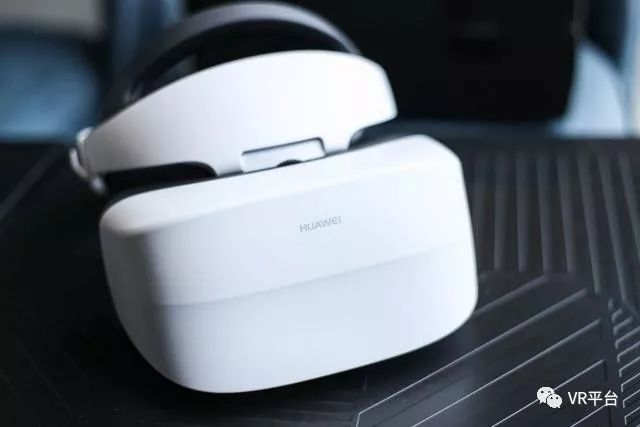
Huawei announced a broad cooperation with IMAX at CES 2018, creating an IMAX immersive experience solution based on Huawei AR/VR devices. This device is Huawei VR 2. Currently, HUAWEI VR 2 is officially on sale for 1999 RMB, available on e-commerce platforms such as Huawei’s official mall, JD.com, and Tmall’s Huawei flagship store.
The official claim is that Huawei VR 2 is the first VR product in China to meet IMAX viewing standards, with a 3K resolution providing clearer picture quality, and 615 PPI greatly reducing the graininess and “screen door” effect of images. In terms of content, it introduces the Huawei Video VR version and aggregates content from Youku VR and iQIYI VR, gathering a massive collection of movies and series. Furthermore, it can directly project the computer screen onto HUAWEI VR 2, allowing for the experience of computer games and online blockbusters.
· AntVR

AntVR currently has four models of mobile VR glasses for sale on its official website, including the 149 RMB AntVR Xiaomeng, the 299 RMB AntVR Vega, the 138 RMB AntVR Energy Edition, and the 149 RMB AntVR JiTao. The AntVR Xiaomeng features a foldable design, making it compact and portable. It has three pupil distance adjustments, supports glasses wearers, and is compatible with 5.0-6.0 inch smartphones. The AntVR Vega also has three pupil distance adjustments, supports 5.0-6.0 inch smartphones, and glasses wearers. With a 100-degree field of view, it is quite outstanding for mobile VR glasses in this price range. It has a semi-open design, with no pressure on heat dissipation. The AntVR Energy Edition features a superhero design, which is likely to win the favor of both children and adults, weighing only 144g, making it suitable for long-term use. It has no distortion and a 100° large field of view, with adjustable pupil distance. The AntVR JiTao supports iOS/Android systems with 4.5-6 inch smartphones, featuring a foldable design and available in black, white, and red colors. It can interact through head control, hand control, or wired control.
Devices and brands are listed in no particular order. Images and parameter information are sourced from the internet.